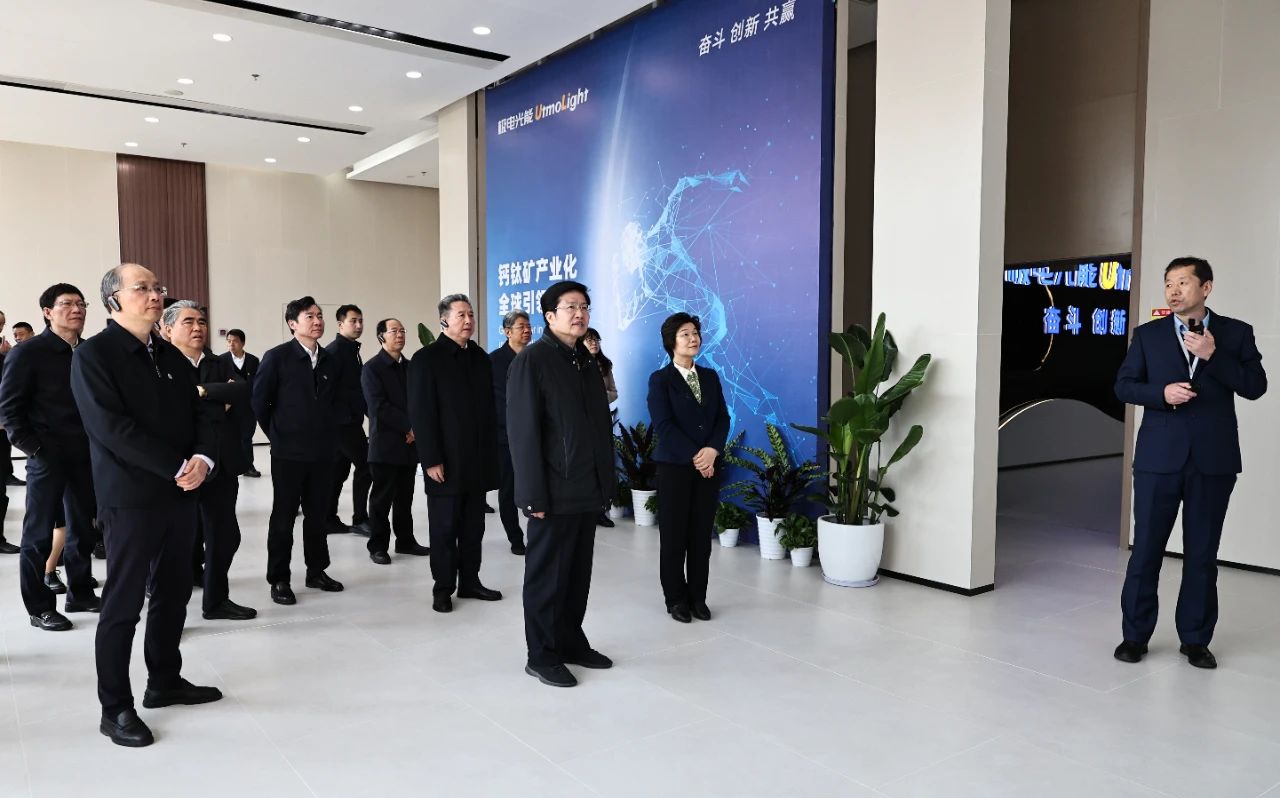On March 20, Gao Yunlong, Vice Chairman of the National Committee of the Chinese People's Political Consultative Conference (CPPCC) and Chairman of the All-China Federation of Industry and Commerce (ACFIIC), led a research delegation from the CPPCC Economic Committee to visit UtmoLight. Li Xiaopeng and Yi Huiman, Deputy Directors of the CPPCC Economic Committee, participated in the investigation, accompanied by Zhang Yizhen, Chairman of the Provincial CPPCC Committee.

Dr. Yu Zhenrui, Co-founder and President of UtmoLight, guided the delegation to tour the perovskite technology exhibition hall and the company's first GW-scale production line. He provided a detailed introduction to UtmoLight's scientific innovation achievements and industrialization progress. To date, the company has overcome key industrialization challenges such as large-area fabrication and stability enhancement. The successful rollout of its self-developed 2.8m² ultra-large-area perovskite photovoltaic module marks a critical step toward large-scale mass production.
Gao Yunlong acknowledged UtmoLight's pioneering role in technological innovation and commercialization, emphasizing that perovskite technology represents an important breakthrough in energy structure transformation. He noted that UtmoLight's practices have injected new momentum into the photovoltaic industry's upgrading. He encouraged the company to fully leverage its "chain leadership effect" to accelerate technological iteration and industrial chain synergy, maintaining dual global leadership in both R&D and industrialization progress.
As an innovation benchmark in the new energy sector, UtmoLight is deeply integrating cutting-edge technologies into China's dual carbon strategy through its core values of "striving, innovation, and win-win cooperation." Standing at the new milestone of mass-producion 2.8m² ultra-large-area modules, the company will continue to play a leading role as a benchmark. By leveraging breakthroughs in perovskite technology, it aims to drive large-scale applications across diverse scenarios including utility-scale ground power stations, distributed power stations, building-integrated photovoltaic (BIPV) systems, and green transportation. This will significantly expand green energy consumption scenarios, transforming every ray of sunlight into powerful momentum for society's green transition.